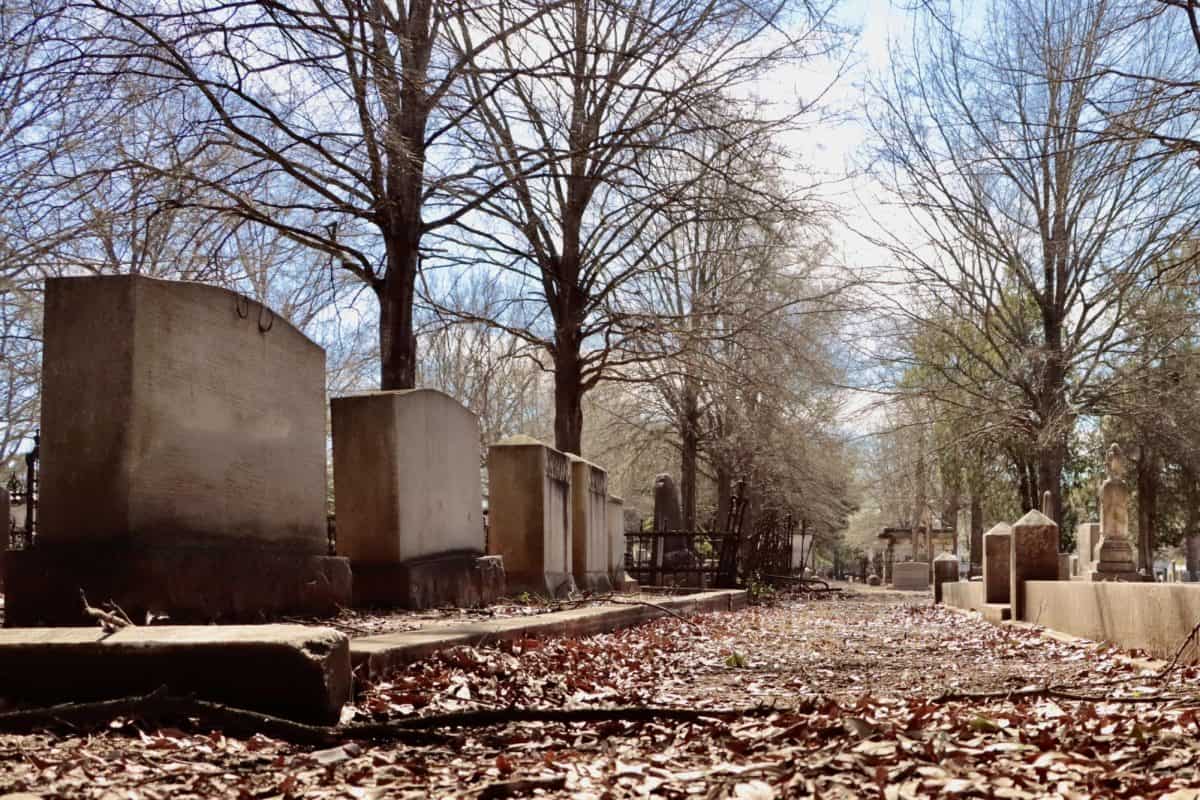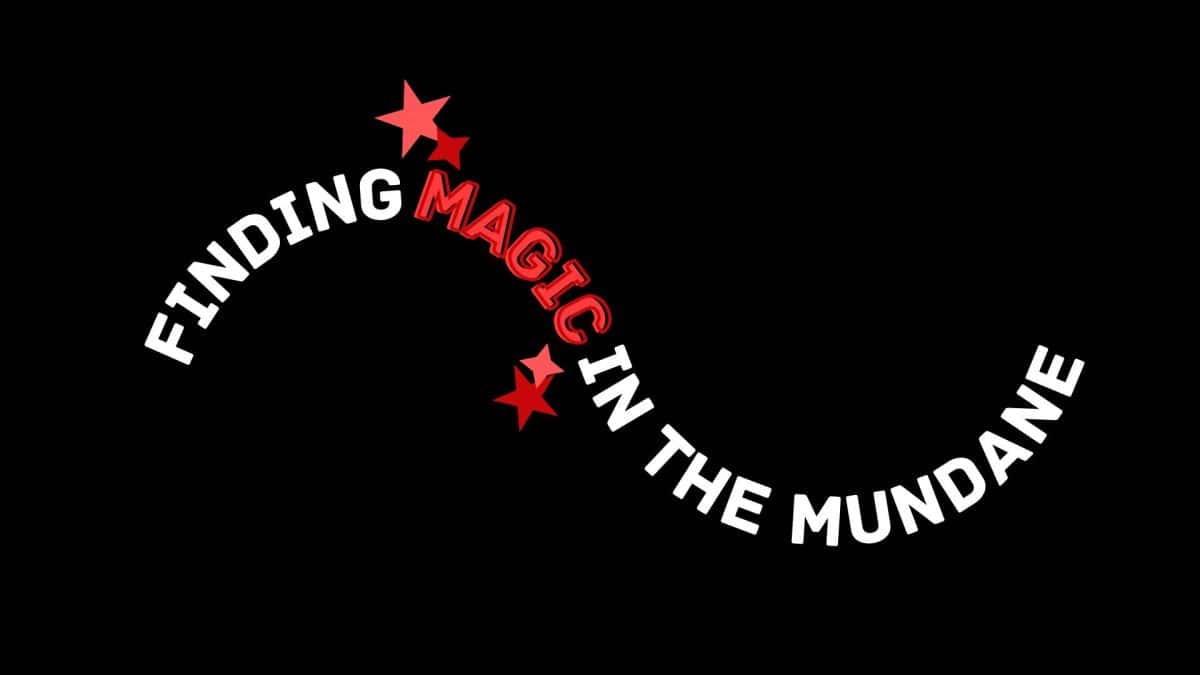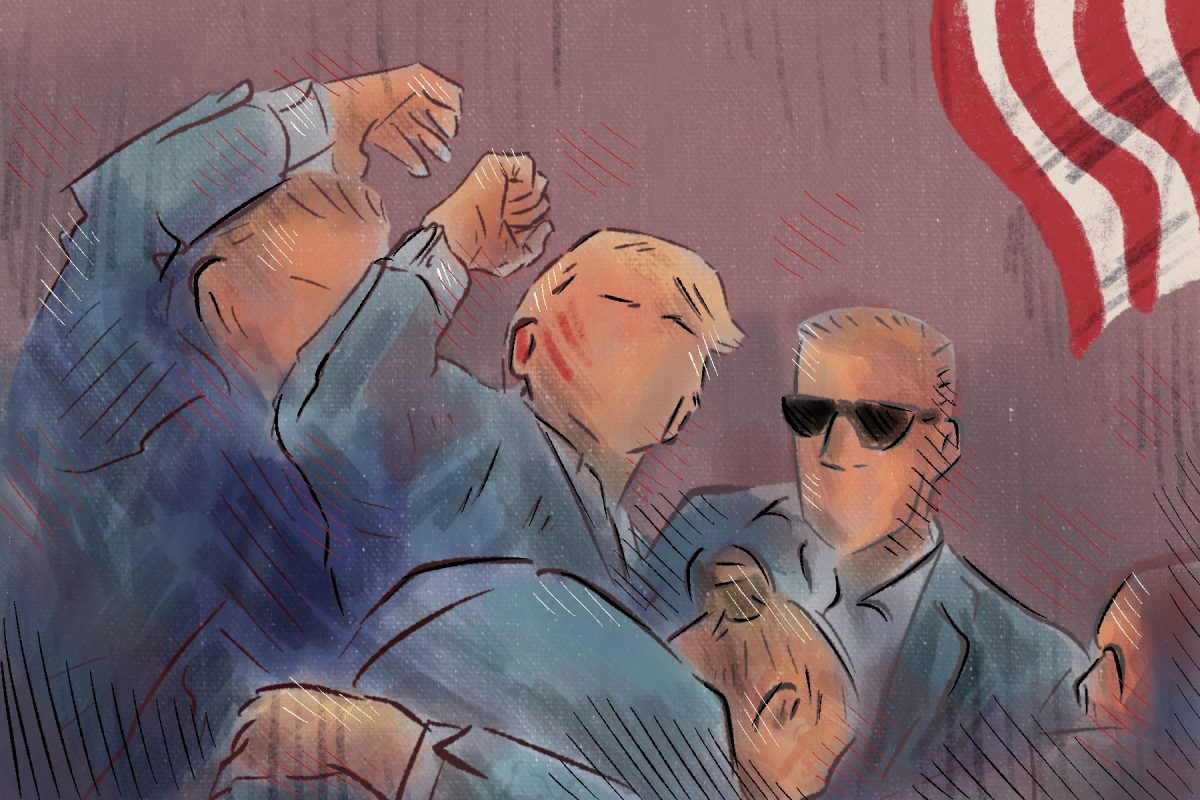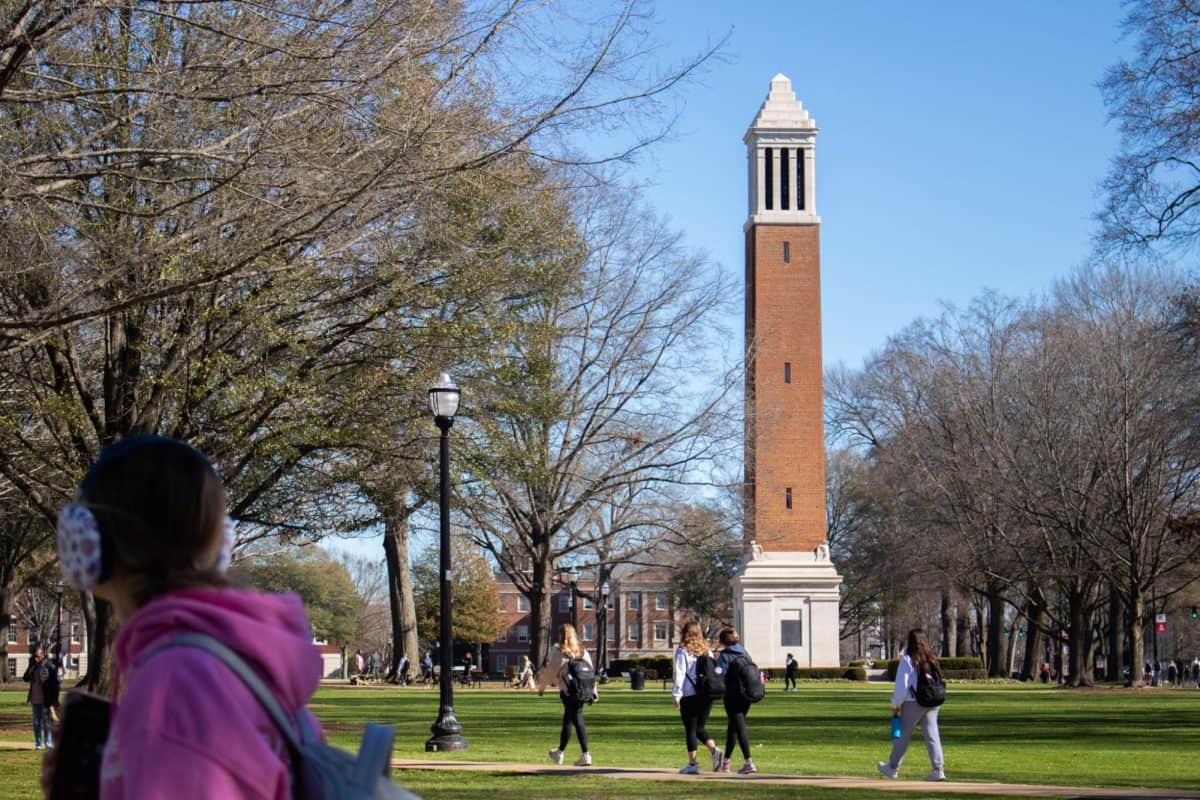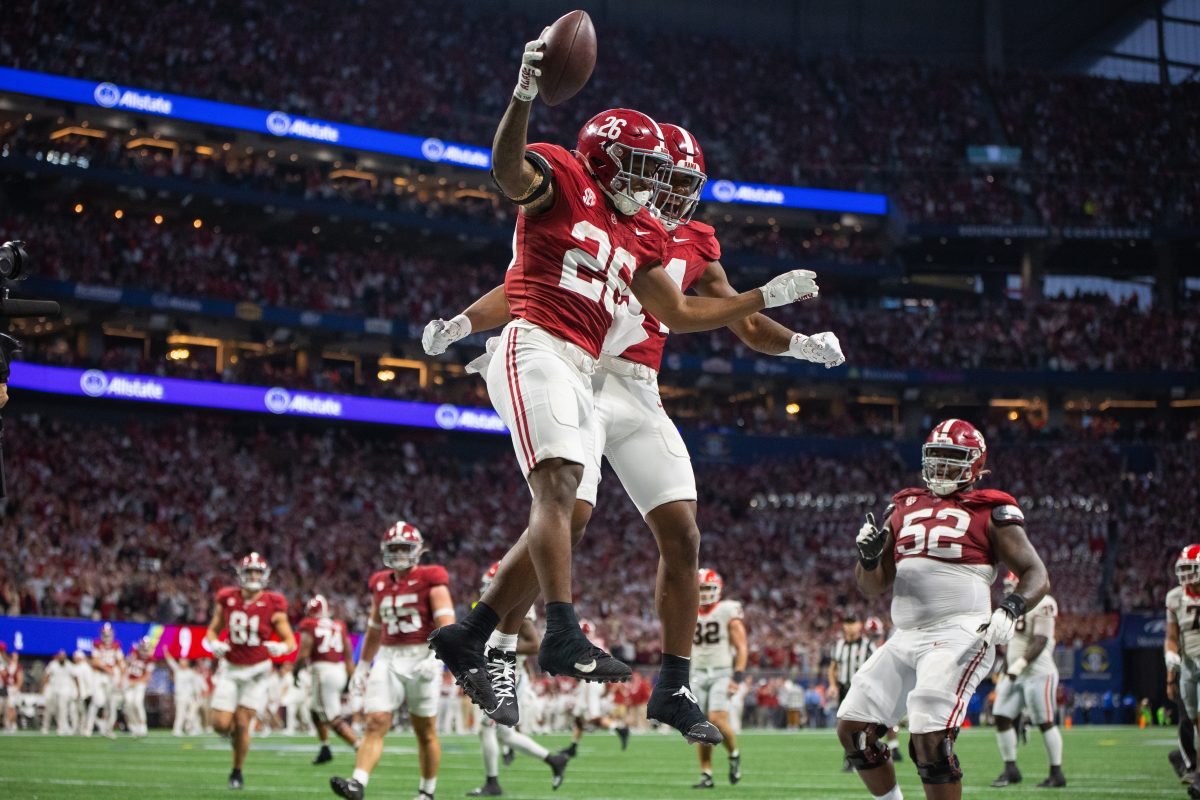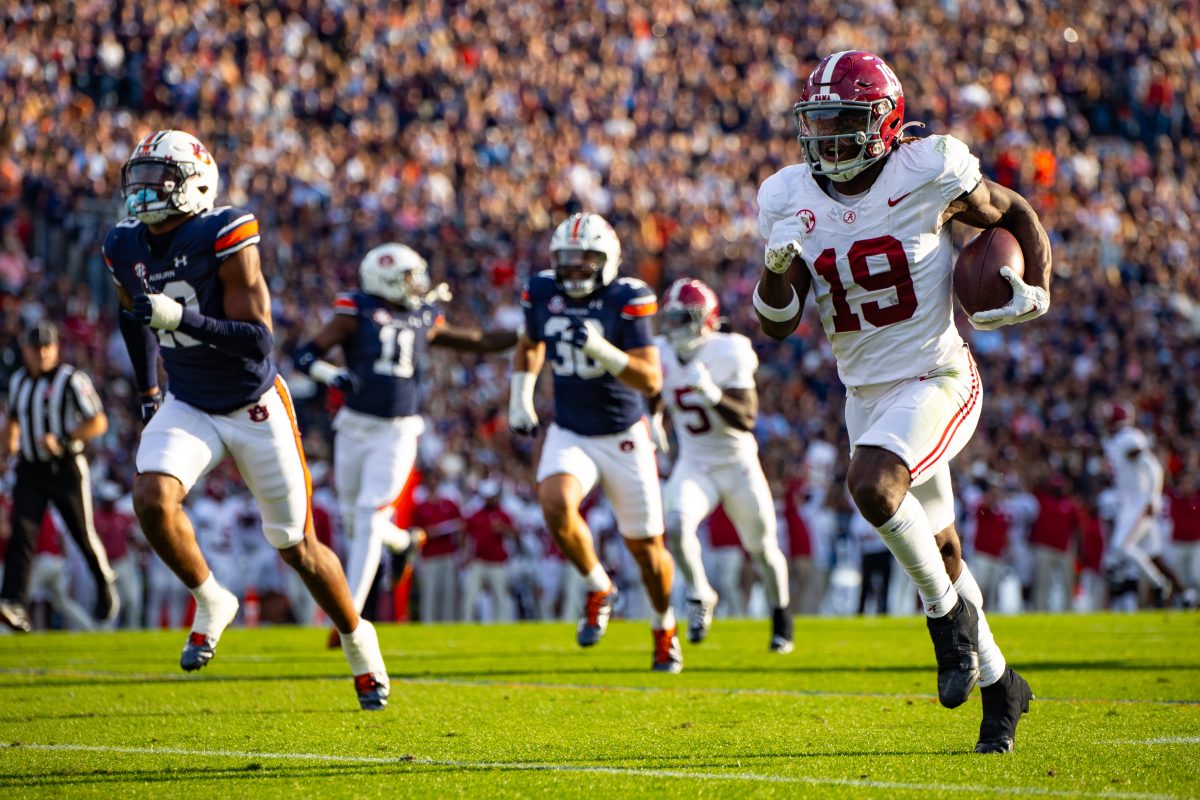Across the street from Bryant-Denny Stadium sits a stark reminder of the inevitable, uncomfortable reality that becomes only more palpable with each birthday: death. Evergreen Cemetery, owned by the city of Tuscaloosa and founded in the 1850s, remains open for both the living and the dead. The northern and southern gates stay open for foot traffic, tourists and dog-walkers. Very few family plots remain available for the recently departed.
In the postmodern mind, death is largely ignored, or otherwise sanitized. We rarely see, discuss or even venture to name death (“he passed away”) as our ancestors did. A cemetery in 2024 has become a site of Halloween, fright and spook.
Yet, to the 19th century mind, death was more near, palpable and accepted; cemeteries of old might have resembled a botanical garden, an arboretum or a public park. Tombs, especially those of the wealthy, showed artistic flair. Evergreen’s funerary architecture and detail, for instance, reveal a beauty worthy of “Southern Living” magazine.
Indeed, in the shadow of the stadium, just next to Tutwiler Hall, we have our own Victorian-era time machine. In Evergreen Cemetery, ornate designs, deep symbolism, and religious referents mark the marble headstones, the magnificent mausoleums, and even the wrought-iron finials that fence off family plots. In short, this place of death remains a place of beauty.
If you, like me, live near Tuscaloosa’s 12th Street, then you know that real estate close to campus is at a premium. So, one may wonder: Why doesn’t the University broker a deal with the city of Tuscaloosa to buy Evergreen Cemetery and put in some student housing, a new athletic complex … or maybe a parking deck? Heck, why not a Buc-ee’s?
A utilitarian society exclusively driven by capital would certainly put to death such reminders of death, gobble up graveyard plots, and make “better,” more profitable use of such space. Remember the real estate axiom: “location, location, location!”
Despite its beauty, what’s the economic advantage of preserving a city cemetery that sits about a first-down distance from the 10th-biggest sports stadium in the world?
To be fair, disinterring the dead is an extraordinary legal feat, and to my knowledge, there has been no talk of bulldozing Evergreen. Yet, why do our citizens and lawmakers alike see the value in preserving this not-for-profit death plot situated right next to the Crimson Tide’s cash cow?
In the Gospels, Jesus talks a lot about money. He gives pointed exhortations for its purpose and proper use. This same Jewish rabbi speaks candidly about death, too – especially his own. The preservation of Evergreen Cemetery, then, challenges our bottom line, putting our penchant for profit on hold. “For what shall it profit a man, if he shall gain the whole world, and lose his own soul?” Jesus says in Mark 8:36.
Likewise, Ash Wednesday marks the Christian calendar (and Christian forehead) with a sullen reminder that death shall come to the living, no matter how much our lives shimmer and shine now. “For dust thou art, and unto dust shalt thou return,” God says to Adam in Genesis 3:19.
The smudgy, ashen smear I invited onto my forehead this Ash Wednesday might seem strange. When I taught high school in Washington, D.C., one of my students, insulted by this Christian custom, called it “an ass tradition.” Why mark the living with this referent of death –– an ashen cross?
The cross signifies the Roman Empire’s biopolitical right to the legal (and lethal) use of force. It’s a horrid sign. To the Christian imagination, though, this ashen cross inaugurates the season of Lent – a 40-day period of prayer, fasting and penance in preparation for Good Friday, which commemorates the memory of Jesus’ death on a cross, and his subsequent plot-twisting resurrection on Easter.
In an ironic way, the ashen cross signifies life, and love, and this year it fittingly marked many Christian foreheads on Valentine’s Day.
So, what’s the utilitarian value of Tuscaloosa’s Evergreen Cemetery? Next to none – I’m dead serious! It would make more economic sense to (finally!) put in a Trader Joe’s. And yet, contrasting with Tutwiler Hall’s youthful glam, eclipsed by the south end zone’s expansive shadow: Evergreen. Our fixed memento mori, sobering our aspirations, beckoning an alternative economy where death has lost its sting.
Wrinkles will rise, the Tide may fall, yet the psalmist remembers: “They still bear fruit in old age; they are ever full of sap and green” (92:14). Evergreen Cemetery – rightly named.
This Ash Wednesday, I was grateful to stand as one of the Crimson Tide’s Christians whose forehead asked: “Can goodness come from ashes?”
Russell Galloway is a doctoral student in the Department of Modern Languages and Classics studying Spanish literature.

